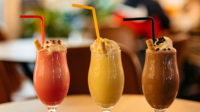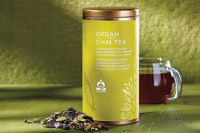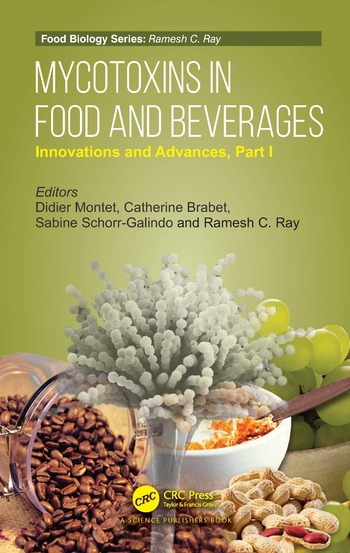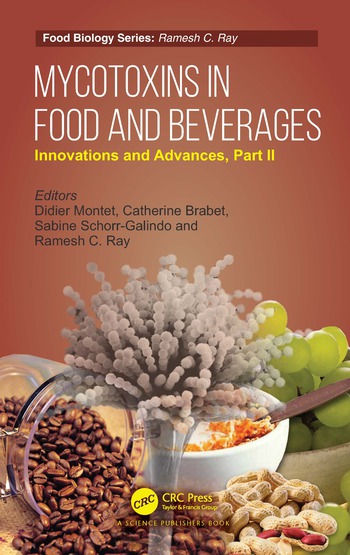Ingredient Spotlight
Classic flavors remain in favor with consumers, new beverages
Vanilla, chocolate and strawberry help bridge gap for new flavor trends

Photo by aliaksandrbarysenka/courtesy of Canva
In season 3 of the podcast “The Plot Thickens,” host Ben Mankiewicz details how Lucille Ball evolved from being a small-town girl from Jamestown, N.Y., to become the funniest women in America. Through her classic TV sitcom “I Love Lucy,” the women who was told early on that she had no talent eventually became a celebrated female comedian whose legacy spans across generations.
Much like how Ball became a celebrated comedian who stood the test of time, classic flavors like vanilla, chocolate and strawberry have enjoyed even greater longevity even as new, exotic entrants look to challenge their status in beverage formulations.
“They’re called the classics for a reason ― consumers love them,” says Philip Caputo, marketing and consumer insights manager for Virginia Dare, Brooklyn, N.Y. “Formulators are also used to working with them, and the different complexities and opportunities that they offer. There’s always going to be a market for classic flavors.”
Meghan Sutton, marketing manager at Philadelphia-based Tastepoint by IFF, also details the comfort that these classic flavors provide for consumers.
“Despite consumers’ increasingly adventurous palates, there will always be a natural draw toward those familiar favorite flavor profiles like vanilla, chocolate and strawberry,” she says. “These classic staples have been topping the beverage flavor charts for quite a while, and with the uncertainty of the future, consumers will increasingly turn to familiar and nostalgic flavors that provide an emotional connection and remind them of simpler times.
“In terms of newly launched products, we often see brands featuring well-known flavor variants when introducing a product into the market, and then experimenting further down the road with line extensions or even seasonal and limited-edition launches,” Sutton continues. “This is especially true if the product is fresh-to-market and unfamiliar to consumers entirely.”
Sydney Riethman, marketing specialist for Sensient Flavors & Extracts, Hoffman Estates, Ill., also highlights how nostalgia has been a major theme the past couple of years during the pandemic, making classic flavors even more desirable for consumers.
“In a world that seems to be continuously full of uncertainty and complexity, with this being heightened more than ever during the pandemic, consumers like to connect with things that remind them of ‘the good old days’ or simpler times, and one of the most intimate ways to do this is through the senses of taste and smell,” she says. “Classic flavors like vanilla, chocolate, and strawberry reconnect consumers with childhood memories, and therefore bring a sense of comfort and nostalgia. We also see these flavors resurging and resonating in ways that consumers have never seen before by bringing in more unfamiliar twists to keep it nostalgic and classic, yet adventurous and exciting.”
For chocolate, specifically, Gretchen Hadden, marketing manager at Minneapolis-based Cargill Cocoa & Chocolate, highlights that the flavor has a near universal appeal for consumers.
“In our recent ChocoLogic survey, we found six in 10 consumers choose chocolate-flavored beverages at least half of the time,” she says. “Motivations for choosing chocolate vary, as our research suggests consumers view the beloved flavor as a reward, mood lifter, energy booster and more.
“Formulators certainly appreciate those positive consumer associations, but chocolate has other benefits in beverage formulations ― especially in drinks packed with whey, plant proteins or other functional ingredients with flavor baggage,” Hadden continues. “In these applications, chocolate’s intense, rich taste can hide a myriad of offnotes, enabling brands to enrich beverages with nutritional benefits.”
Expansive reach
Among the benefits to utilizing classic flavors like vanilla, chocolate and strawberry, is its versatility to play well in a variety of beverage categories.
“Vanilla has broad appeal in everything from nutritional and protein beverages to coffee and tea, smoothies, dairy drinks, alcohol and even seltzers and carbonated soft drinks,” Tastepoint’s Sutton says. “Chocolate is particularly strong in the protein realm, along with milkshakes and coffee. Strawberry’s versatility expands from juices, waters and energy drinks to protein and dairy-based beverages.”
Sutton adds that these iconic flavors can be vital in the new age beverage markets.
“Take plant-based nutritional beverages for example ― in recent years, many new brands established and launched lineups with vanilla, chocolate or strawberry as their initial offerings,” she notes. “With plant-based now exploding in popularity, brands are beginning to branch out and offer more unique flavor combinations to their consumers, while the core lineups remain.”
These flavors also can be used as a bridge for up-and-coming flavor trends. “We’ve seen that consumers may be more willing to try a novel flavor if it is paired with a well-known profile,” Sutton says. “Additionally, varietal versions of time-tested favorites (i.e., Oregon strawberry or Madagascar vanilla bean) provide a fresh element while remaining close in.”
Sensient’s Riethman highlights that although consumers are more adventurous with product trials, utilizing familiar flavors can encourage them to act upon that curiosity.
“By utilizing these flavors in beverages that may not be expected, consumers feel comfort knowing they will like it, but also become intrigued when these classic flavors are mixed with newer, exotic, exciting flavors,” she explains. “These flavors also provide a sturdy yet versatile base for food and beverage to be built upon. Similar to the three primary colors, when these staple flavors are mixed, matched, and enhanced, these products go from basic to trendy and nostalgic.”
Noting the power of vanilla as a foundation flavor, Virginia Dare’s Caputo also details its ability to serve as a complementary ingredient that brings differentiation in beverage applications.
“Elevating a classic flavor like vanilla adds a sophisticated twist,” he says. “Upgraded examples include vanilla tarragon blackberry, vanilla anise, and vanilla bean white chocolate. How delicious do those sound?
“Consumers are adventurous, always in pursuit of the next exciting flavor,” Caputo continues. “At the same time, they’ll always turn back to their tried-and-true favorites whenever they have a craving. That’s why the classics like vanilla and chocolate are a perfect flavor to formulate with ― they can shine as a stand-alone flavor or elevate another flavor that they’re complementing.”
Cargill’s Hadden echoes similar sentiments when it comes to chocolate.
- Philip Caputo, marketing and consumer insights manager for Virginia Dare
“Sometimes chocolate flavor is the star of the show such as in a chocolate milk, while other times it’s complementary,” she says. “As a well-known and beloved flavor, it’s the perfect option to couple with new, more exotic flavors as consumer appetite for craft flavors continues to soar. For example, pairing cacao with chili strikes a balance for consumers between traditional and something bold and new.
“Ultimately, beverage-makers are using cocoa and chocolate ingredients for a timeless flavor that consumers love,” Hadden continues. “It is sometimes used to bring an ultimate indulgent experience, but other times it provides a touch of decadence in areas such as health and functional beverages.”
Noting chocolate and cocoa powder’s staple usage in categories like sports drinks, coffee beverages as well as milk and dairy alternatives, Hadden highlights that the classic flavor also is finding its footing within the beverage alcohol environment.
“We’re also seeing chocolate and cocoa powder used in the alcoholic beverage space ― think indulgent drinks such as chocolate or white-chocolate raspberry martinis,” she says. “As craft beer continues to boom in popularity, we’re even seeing very creative and innovative flavors that integrate chocolate flavor, particularly with dark beers such as stouts and porters.”
Classic future
With classic flavors still the darlings of beverage formulation, experts highlight the importance of maintaining a strong supply chain.
“The consumer demand for natural vanilla is extraordinary ― so much so that the supply can sometimes be inconsistent and unreliable,” Virginia Dare’s Caputo says. “The growers we work with understand that delivering the gold standard in vanilla is a pursuit that draws equally on science and art, which allows us to be the premiere source for natural, clean label vanilla.”
Detailing the sophistication of the cultivation processes for any spice, Caputo highlights that the curing process is a vital step to develop natural vanilla’s distinct flavor.
“The nuanced flavor and aroma of Virginia Dare’s premium vanilla comes from working with growers who remain dedicated to the traditional harvesting, curing, and extraction process of the fruit pods,” he says. “We deploy both analytical tools and human expertise during our proprietary extraction process to retain vanilla’s delicate, natural aromatics and full body, ensuring a consistent, flavorful consumer experience.
“With more than 70% of the world’s vanilla coming from Madagascar, global vanilla leaders like Virginia Dare remain committed to improving Malagasy vanilla smallholders’ livelihoods by working to reduce market volatility, promote financial inclusion, and provide a living income,” he continues.
As beverage-makers continue to utilize classic flavors, ensuring access to these ingredients will be vital to support new product development.
Looking for a reprint of this article?
From high-res PDFs to custom plaques, order your copy today!










